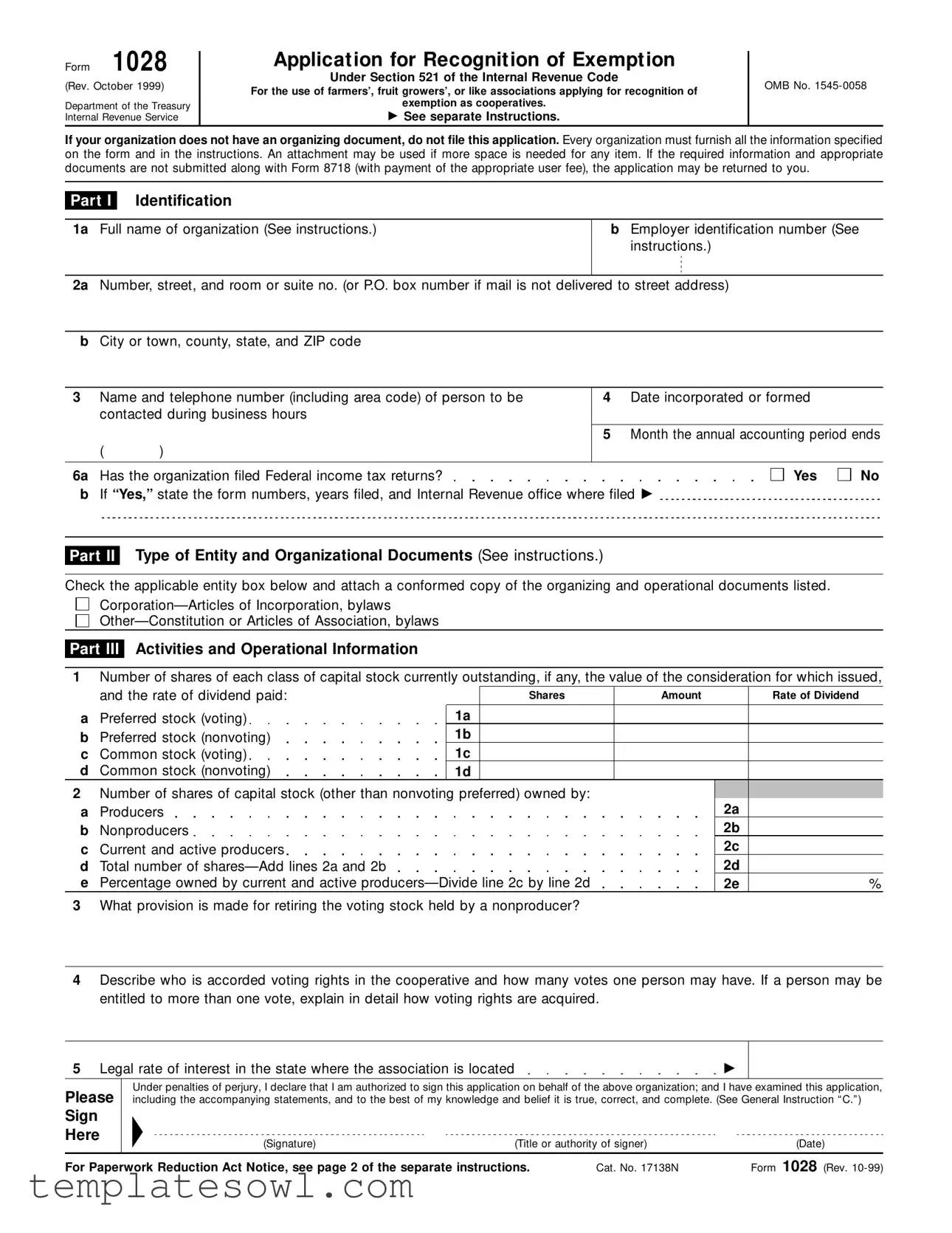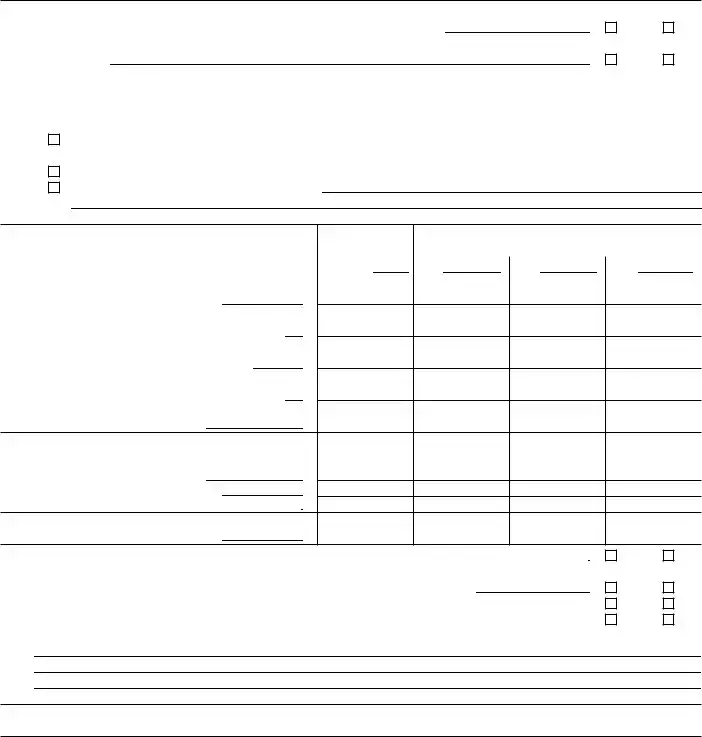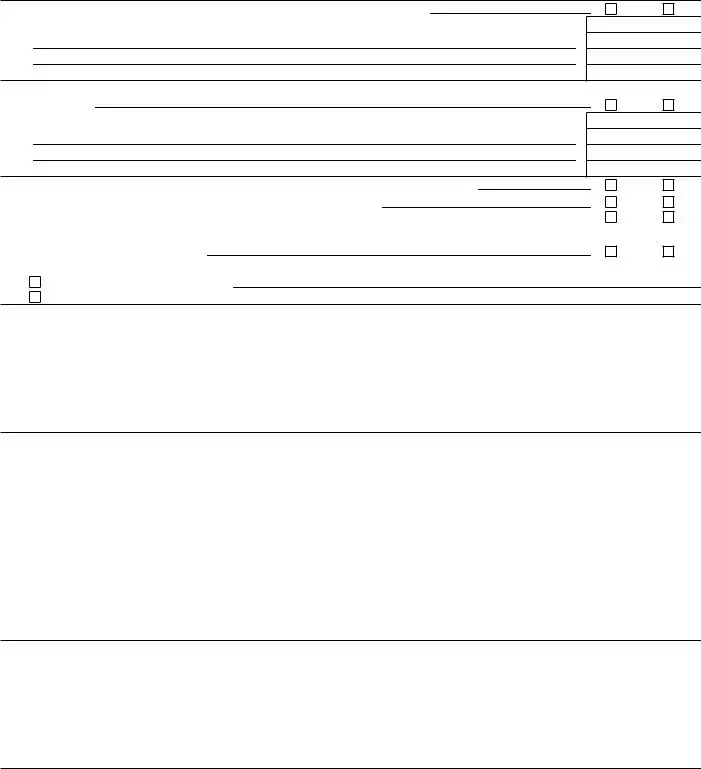Completing Form 1028, which is essential for farmers’ and similar associations applying for exemption recognition as cooperatives, is a delicate task that requires attention to detail. One of the common mistakes is providing incomplete information in the identification section. It is vital to ensure that all requested details, such as the full name and employer identification number, are filled out completely. Missing or inaccurate information can lead to delays or rejection of the application.
Another frequent mistake involves failing to provide the necessary organizational documents. Applicants often overlook the requirement to attach a conformed copy of important documents like Articles of Incorporation or bylaws. Submitting the application without these attachments makes it likely that the IRS will return the application for missing information.
Some individuals also misunderstand the significance of the annual accounting period. Incorrectly reporting the month the organization’s accounting year ends can introduce confusion regarding fiscal matters. Such discrepancies, while seemingly minor, can complicate the application process.
Providing insufficient details regarding the types of capital stock can hinder the application, too. Applicants often fail to describe the nature of the shares accurately, such as the number of shares currently outstanding and the rates of dividends paid. Complete clarity in this section is crucial for the reviewers to understand the financial structure of the organization.
Another area where mistakes occur is in the financial data section. Many applicants either miscalculate or omit essential financial figures. For instance, failing to accurately report total receipts or expenditures can lead to serious implications for the accuracy of the application. The IRS relies on these figures to evaluate the financial health of the organization.
Inadequate descriptions of operational activities can also pose a problem. When applicants do not provide thorough explanations of how the cooperative operates, it leaves the IRS with unanswered questions, potentially leading to rejection. Transparency about business activities is key to demonstrating compliance with exemption requirements.
A common error is neglecting to update the IRS on changes that have occurred in the organization since its formation. If the organization has not operated consistently with the originally provided information, disclosing these changes becomes essential. Failing to do so invites further scrutiny and possible complications.
Another oversight often occurs with patronage dividends. Applicants sometimes do not clarify whether all patrons, members, and nonmembers receive these dividends on the same basis. This ambiguity can create confusion and may impact the cooperative's eligibility for exemption.
Additionally, many forms are submitted without a proper signature from an authorized representative. The application must include a signature affirming its accuracy and completeness. This step, while simple, is critical. Omitting it can lead to unnecessary processing delays.
Finally, some applicants misunderstand or overlook the IRS's requirement for reserves. State laws may mandate the accumulation of reserves, but applicants sometimes forget to specify the names and purposes of these reserves in their applications. This oversight could suggest a lack of compliance with state regulations, which can reflect poorly on the organization’s credibility.




